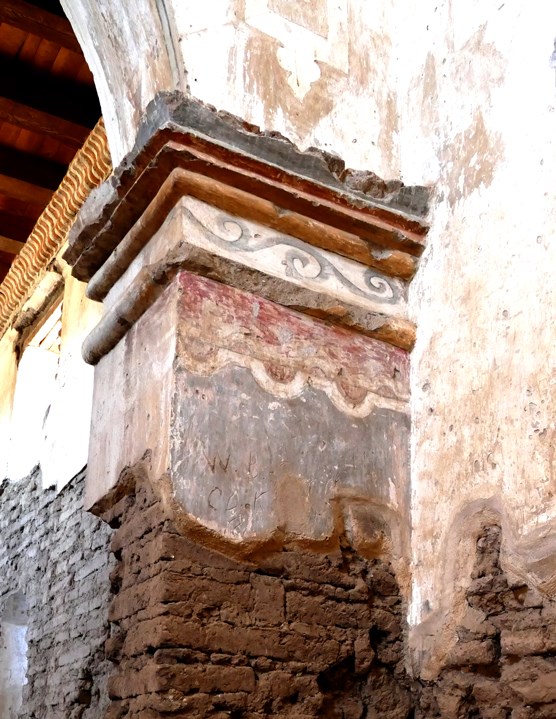Last updated: March 12, 2022
Article
Earthen Architecture - Glossary of Terms

Soil
Soil refers to the upper crust of the Earth's surface. It is one of the oldest and most common of building materials. It consists of clay, silt, sand, gravel, and organic matter. The word soil is preferred over dirt or mud especially when applied to a built environment. The soil near Tumacácori is rich in clay and aggregates thanks to the Santa Cruz River, and local inhabitants made ample use of the material.

Aggregates
Aggregates are particles broken down from rocks through natural erosion and sedimentation. They are categorized by size. Sand is the most common and comes in different shapes, colors and sizes. Thanks to volcanic activity in the area long ago, there are a variety of particles available for building construction. Aggregates can be held together by cementitious materials, such as clay.

Cement
Cement is a glue that binds aggregates together. Two common types are clay cement (used for adobes) and lime cement (used for lime render). Portland cement is a type of lime cement and when mixed with aggregates and hardened becomes concrete.

Adobe
Adobe is a sun-dried soil block. It is a molded (usually in rectangular shape) mixture of soil and water that is dried to harden. They are easy to store and to build walls with. Spanish-era adobes are easily recognizable by their dimensions. When adobes are fired, they become bricks. Adobes are laid in bedding mortar.

Render
Render is a protective coat on a wall and can be applied on both interior (plaster) and exterior (stucco). Lime render is common in Tumacácori, although soil render is popular in other parts of the U.S. such as New Mexico.
A render is prepared by mixing cement and aggregates. The mixture can be applied on a wall with certain thickness, visible to the eyes. The render can be painted on, either before it dries (al fresco) or after it dries (secca). Tumacácori's painted finishes were mostly done with secca technique; as a result the paint layers tend to ‘peel’ off (see figure).
A render is applied in a plastic state and becomes solid upon curing. The gradual change in state gives rendering incredible versatility to protect and to decorate buildings. Note: Render is different from wash.

Wash
Wash is a very thin surface coat, and unlike render, it is liquid. Therefore, it is applied with a brush or other similar tools. Lime wash is almost translucent. It contains very fine (nano) lime particles suspended in water but invisible to the eyes. When the lime wash cures, it turns white. In Mission San José de Tumacácori, there are two gypsum wash coats on top of a preparatory lime render. In certain areas, tool marks for the wash coats are visible.

Mortar
Mortar is similar to render in composition, but the application is different. While rendering shields and covers a wall, mortar bonds masonry units, such as bricks, adobes, and stones. As with render, mortar contains cementitious materials (like clay or lime putty) and aggregates. Bedding mortar goes in between the masonry units and can be recessed past the wall face. Pointing and repointing mortars are used to fill in the recessed areas between the masonry units. Although bedding mortar and repointing mortar can be of the same material and make-up, repointing mortar is meant to be sacrificial for replacement over time, while bedding mortar is meant to be more permanent.
